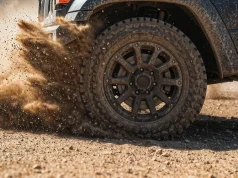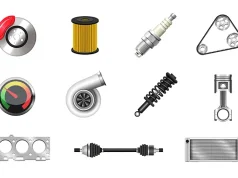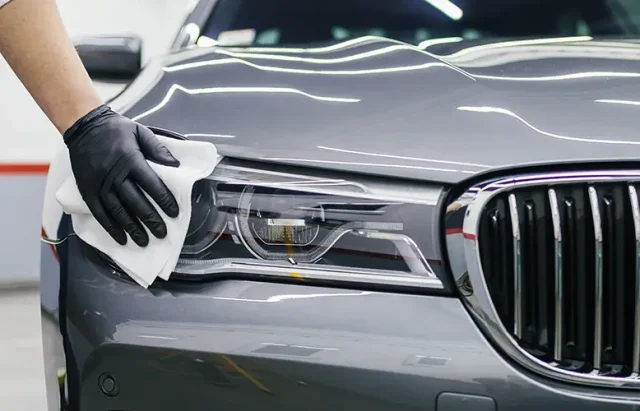
The odd wash with soap and hosing down won’t do much for your car. Detailing is a meticulous process that (as the name implies) involves a detailed cleaning process that goes beyond the surface paint to remove ingrained dust and dirt. Unlike ordinary washing and cleaning includes a protective layer to shield your car against the damaging effects of UV radiation, contaminants and weathering.
The process has been democratised and you no longer need to shell out enormous sums at professional detailing services to restore your car to a near-showroom look. You just need to source the best car exterior cleaning products and follow defined steps to get the best results your car deserves.
All vehicles benefit from refreshed and restored paintwork, clean wheels and a sparkling sheen. But this is not about looks alone. Done right, car detailing slows wear and tear by dealing with flaking, rust, reduced visibility, compromised braking and component damage. Safety is an overlooked result, and so is the higher resale value if you decide you need a new ride.
Gathering Your Gear
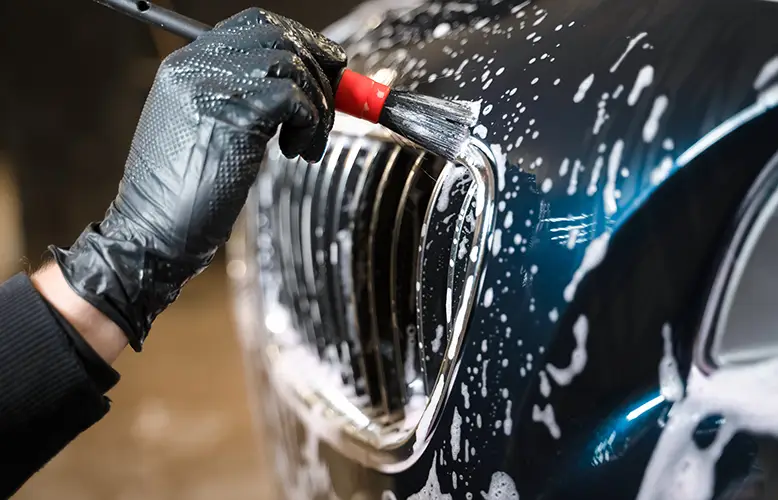
With the abundance of cleaning and detailing products, knowing where to start can be confusing. Usually, this is the wheels, tyres wheel wells, or car components that collect the most road debris, like the doors, bonnet and boot. With that said, any serious detailing starts by collecting all your gear. This includes:
- Pre-wash solution and shampoo
- Microfibre cloths, mitts, pads, brushes and sponges
- Drying cloths, towels or blowers
- 2 clean buckets
These are the main products used in the initial cleaning phase. Pre-wash solution and shampoo are applied from the top down to break up ingrained and hardened dirt and grime. Mitts, cloth and sponges remove contaminants while being gentle on the paintwork and drying cloths prevent residue and swirl marks. Pads are used for spot cleaning, while brushes work effectively in hard-to-reach areas.
Since detailing additionally includes in-depth cleaning for stubborn stains, you’ll also need:
- Bug, tar, and glue remover
- Wheel cleaner
- Clay bars
- Glass cleaner
Concentrated solutions can easily break down ingrained contaminants, including tar residue, birdlime, flaking paint and rust spots. These may or may not come out with a decent pre-wash and car soap, depending on how dirty the car is.
Step-by-Step Guide to Exterior Detailing
Before diving deep into detail, examine the vehicle to identify problem areas with accumulated dirt, scratch marks, dents, flaking paint and rust pockets. These will need more attention. That said, start the process with the wheels. These pick up the most road debris, with the wheel wells, in particular, collecting the most dirt.
Use a pH-neutral wheel cleaner on the alloys to avoid damaging wax or coatings, and brushes to get to tight spots. Let the solution break up grime, then rinse with warm water. Though this is done by hand, the following steps will require a decent pressure washer with a matching trigger gun and lance.
Apply Pre-Wash Solution and Shampoo
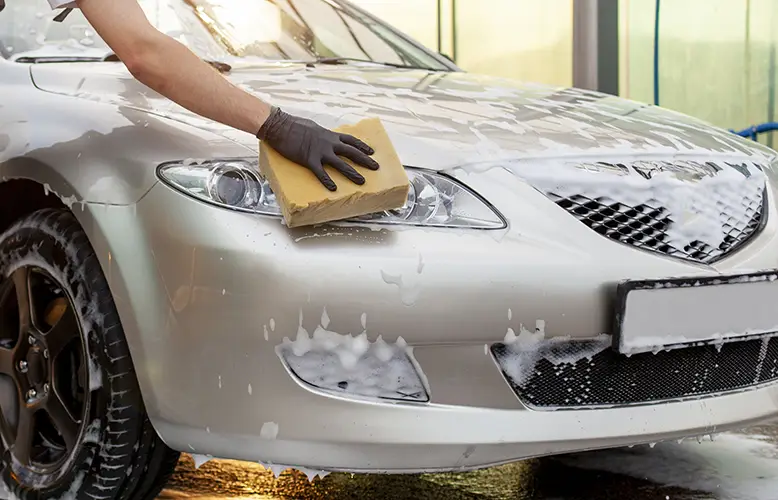
The general cleaning stage starts with a pre-wash solution dissolved in water. This is sprayed out the washer gun and lance from top to bottom. Formulated solutions are not only gentler on the paint and coatings but work much faster than regular household detergents and soaps to dissolve and rid the car of deep-seated grime.
Once this has settled, follow up with the car shampoo. This contains mainly surfactants to lift and dislodge dirt from the car surface, allowing it to be easily rinsed out. Shampoos also consist of distilled water, and foaming agents to create a lather and help spread the shampoo. Some additionally have preservatives for extended shelf life, and waxes or sealants for a bright sheen.
The shampoo is mixed with water in a clean bucket and applied in a circular motion, again from top to bottom, ensuring it covers the whole car. Use clean mitts, clothes or sponges to remove release dirt, and rinse them as needed. Finish up by pressure washing with clean water to remove stuck grime and drying them in the shade, either by hand with towels or using an industrial blower.
Removing Hardened and Stubborn Stains
Once dry, inspect the car for remnant contaminants. Bug remover effectively rids the paint of insect remains, road film and other contaminants without damage.
Similarly, clay bars work against accumulated tar and asphalt, birdlime remover prevents rusting and flaking paint, while brake pad dust and corroded wheels are handled with iron fallout remover or wheel cleaner. All products when applied create a smooth surface ready for the protective stage.
Waxing, Polishing and Sealing
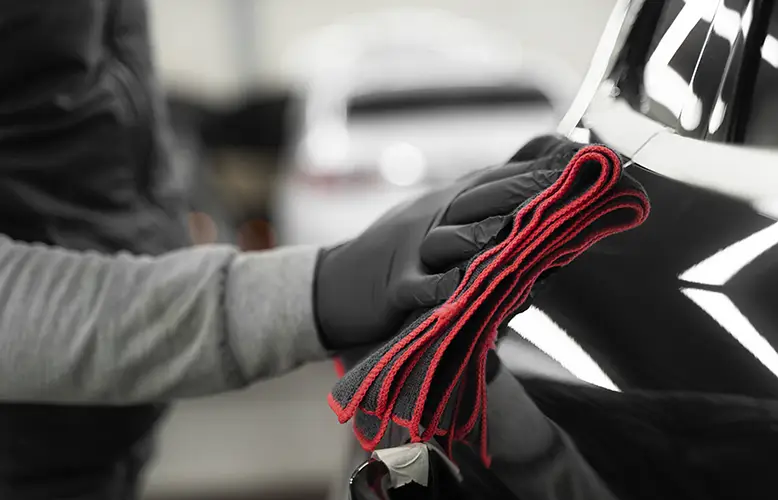
To deal with minor or deeper scratches, water spots, streaks and swirl marks use the right car polish. This exterior car care product comes in multiple types, with abrasive or cutting polishes stripping a thin layer of the clear top coat to contain deeper scratch marks and visible rust pockets. This can be combined with non-abrasive polishes to fill minor gaps and restore the original sheen.
Hybrid all-in-one waxes are also available and combine abrasive and non-abrasive compounds for minor paintwork defects and agents that let the car shine, all in the same product. All can be applied by hand and corresponding applicator pads, or if you’ve had more detailing experience, corded or cordless dual action or rotary polishing machines.
Continuing the theme of the best car exterior cleaning products are waxes. They come either as a liquid wax applied by hand and an applicator pad for a lasting protective and gloss paint layer or spray waxes with faster application for quick touch-ups in minor imperfections. Popular examples are Carnauba wax with its high sheen and hydrophobic properties, and synthetic waxes (or sealants) with infused polymers that offer increased protection against scratching, UV radiation, oxidation (rust) and pooling liquids.
Wrapping Up
The last stages of car exterior detailing involve the glass, exterior trim bits and tyres. Use glass cleaner to remove dirt, insects, road film, fingerprints and other grime from the windscreen, windows, and mirrors and improve overall visibility. Rubber, vinyl and plastic trim bits require matching restorers to bring back the factory gloss look and prevent further damage from UV rays, washing detergents and pollutants. These cleaning solutions are also sold as simple spray bottles or solutions applied with soft applicator pads.
Lastly, consider tire cleaners and dressing to revive tired-looking tyres. Tyre cleaners contain milder chemicals than general wheel cleaners, penetrate the rubber and release ingrained contaminants (grease, brake dust, road debris, etc.). Good cleaners will also slow natural rubber degradation or tyre bloom. For a high-gloss wet or satin look, complete the extensive detailing process by adding dressing. This rehydrates tyres and prevents fading and cracking. With that done, take a step back and enjoy the results.



